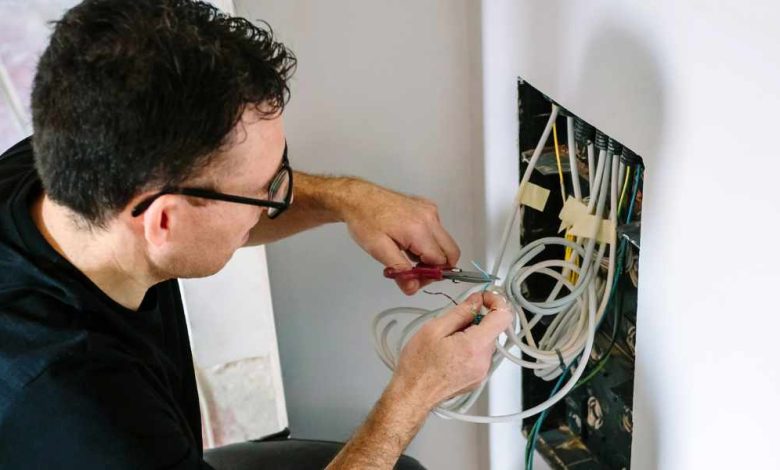Optimizing Connectivity: The Role of Structured Cabling Installers
Optimizing Connectivity: The Role of Structured Cabling Installers

In the fast-paced world of technology, where seamless communication is paramount, businesses rely heavily on robust network infrastructure. The backbone of this infrastructure is often overlooked but plays a critical role – structured cabling. The installation and maintenance of structured cabling systems are entrusted to skilled professionals known as structured cabling installers. In this article, we delve into the significance of these professionals and the impact they have on the efficiency and reliability of modern communication networks.
Structured cabling, as the name suggests, involves the organized and systematic installation of cabling systems that support various hardware, such as computers, phones, and other network devices. This method ensures a standardized approach to cabling, promoting scalability, flexibility, and ease of maintenance. The key to a successful structured cabling system lies in the expertise of the installers responsible for its design, implementation, and upkeep.
One of the primary advantages of structured cabling is its ability to accommodate diverse technologies and applications, making it a versatile solution for businesses of all sizes. The installation process, however, is intricate and demands precision. This is where the expertise of structured cabling installers becomes indispensable.
Precision in Planning:
Before the first cable is laid, structured cabling installers engage in meticulous planning. This involves understanding the current and future needs of the organization, evaluating the layout of the premises, and considering factors like potential interferences and environmental conditions. A well-thought-out plan not only ensures the current functionality but also allows for scalability, preventing the need for frequent overhauls.
Efficient Installation:
The actual installation phase is where the skills of structured cabling installers truly shine. They meticulously implement the pre-planned design, ensuring that every cable is placed with precision and care. This not only minimizes the chances of signal interference but also makes troubleshooting and maintenance more straightforward in the long run.
Minimizing Downtime:
Downtime can be a significant concern for businesses, especially in today’s hyper-connected world. Structured cabling installers prioritize minimizing downtime during installation and maintenance. Their expertise allows for swift and efficient work, reducing the impact on day-to-day operations.
Future-Proofing Networks:
In the rapidly evolving landscape of technology, businesses need networks that can adapt to emerging trends and innovations. Structured cabling installers play a crucial role in future-proofing networks by incorporating the latest technologies and industry standards into their designs. This forward-thinking approach ensures that the cabling infrastructure remains relevant and efficient for years to come.
Compliance and Standards:
Structured cabling installers are well-versed in industry standards and regulations. Compliance with these standards is essential for the reliability and safety of the network. Whether it’s ensuring proper cable management, fire safety measures, or adherence to specific data transmission standards, these professionals guarantee that the cabling system meets or exceeds the required benchmarks.
Diagnosing and Resolving Issues:
In the event of network issues, structured cabling installers are equipped with the skills to diagnose and resolve problems efficiently. Their in-depth knowledge of the cabling system allows them to pinpoint issues quickly, minimizing downtime and ensuring a swift resolution. This ability to troubleshoot effectively is a testament to their expertise and experience.
Adapting to Evolving Technologies:
The world of technology is in a constant state of evolution. New devices, protocols, and communication technologies emerge regularly. Structured cabling installers stay abreast of these changes, continuously updating their skill set to incorporate the latest advancements. This adaptability ensures that the cabling infrastructure remains at the forefront of technological capabilities.
Collaboration with Other Professionals:
Structured cabling installers often work in collaboration with other professionals, including network engineers, IT specialists, and architects. Effective communication and collaboration are essential to ensure that the cabling infrastructure aligns seamlessly with the overall technological ecosystem of the organization.
In conclusion, the role of structured cabling installers is pivotal in establishing and maintaining a reliable and efficient network infrastructure. Their expertise extends beyond the mere laying of cables; it encompasses strategic planning, precise execution, and a commitment to staying abreast of technological advancements. Businesses that recognize the importance of these professionals invest not only in their current connectivity needs but also in the future success and scalability of their networks. As technology continues to advance, structured cabling installers will remain at the forefront, ensuring that the backbone of communication remains strong and adaptable.









